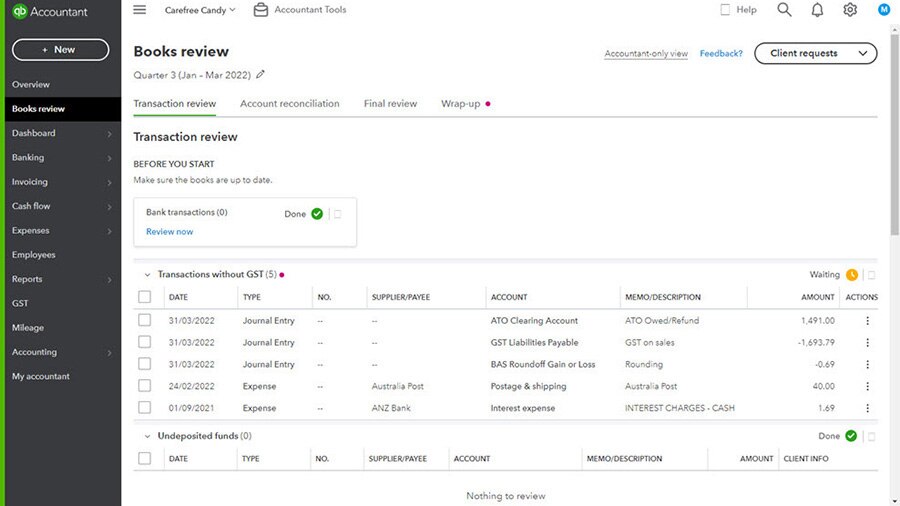How to pay payroll tax
The good news is that the Australian Tax Office (ATO) provides a number of options for paying your payroll taxes. Although the ATO encourages businesses to lodge and pay online, there are other ways of paying payroll tax. These methods include:
Pay with BPAY
BPAY is a quick and secure way to pay your payroll tax directly through your online banking.
Here’s how it works:
- Find your Payment Reference Number (PRN): Your PRN is unique to your business and the type of tax you’re paying. For example, you’ll have a different PRN for income tax and activity statements. Always use the correct PRN when paying payroll tax to make sure your payment is processed correctly.
- Enter the ATO’s BPAY Biller Code: The ATO’s BPAY Biller Code is 75556. Enter this code in the Biller Code field of your online banking.
- Enter your PRN: Add your PRN into the Reference field every time you pay. This ensures your payment is allocated to the right account.
- Submit your payment: Once you’ve entered the Biller Code, PRN, payment amount, and date, select Pay (your bank may call this “Submit” or “Pay bill”).
Pay with online services
You can make secure payroll tax payments directly through the ATO’s online services.
What you’ll need:
- Your Payment Reference Number (PRN)
- A Visa, MasterCard, or American Express card (note: your card provider may charge a small fee)
How it works:
- Log in to the ATO’s online services:
- Enter your PRN, select your card, and make your payment.
Important to know:
- Card payment fees are set by your provider, not the ATO.
- Payments can take up to 4 business days to process, so allow enough time before the due date.
Electronic transfer
You can transfer payroll tax payments directly from your bank account to the ATO.
What you’ll need:
- Bank details for the ATO
- Bank: Reserve Bank of Australia
- BSB: 093 003
- Account number: 316385
- Account name: ATO direct credit account
- Your Payment Reference Number (PRN)
How it works:
- Set up a transfer from your financial institution using the details above.
- Enter your PRN in the payment reference field so the payment can be correctly matched to your account.
- Some banks may support faster payments using Osko or PayID, but the ATO does not currently offer PayID—always use the account details above.
Note: Payments can take up to 4 business days to reach the ATO and appear on your account.
Direct debit
You can set up a direct debit to have payments automatically deducted from your Australian cheque or savings account, or from a credit/debit card.
Ways to set up direct debit:
Note: Only the card holder can set up a direct debit from a credit or debit card.
For bank account direct debits:
- Your registered tax or BAS agent can set it up online or by phone.
- Alternatively, you can complete and return a direct debit request form. Allow at least 7 working days for processing. (The form can’t be used for credit or debit card payments).
Government EasyPay
The ATO’s Government EasyPay service lets you pay payroll tax quickly without needing to log in to online banking.
How to pay:
In person at Australia Post
You can make payroll tax payments at Australia Post using cash, EFTPOS (within daily limits), or cheque.
What to know:
- You must provide an ATO barcode with your payment.
- Cheques and money orders should be:
- In Australian dollars
- Made payable to ‘Deputy Commissioner of Taxation’
- Marked ‘Not Negotiable’
- Not post-dated
- The ATO is moving away from cheques and encourages electronic payments where possible.
- Payments cannot be made at ATO sites or shopfronts.
- Foreign investment application fees cannot be paid at Australia Post, and GST at settlement can be paid via e-conveyancing.
Mail
Although the ATO is moving away from cheques and encourages electronic payments, you can still pay by mail if needed.
How to pay by mail:
- Include a payment slip from your ATO notice, or provide:
- Full name, address, and phone number
- Account identifier (TFN or ABN)
- Payment type (e.g., activity statement or income tax)
- Cheques or money orders must be:
- In Australian dollars
- Payable to ‘Deputy Commissioner of Taxation’
- Marked ‘Not Negotiable’
- Not post-dated
- Mail to:
- AUSTRALIAN TAXATION OFFICE
- LOCKED BAG 1936
- ALBURY NSW 1936
Don’t send cash through the mail. Be aware of postal delivery times—it may take up to 4 business days after receipt for your payment to be allocated to your ATO account. Fees may apply from your bank or post office.
Note: The ATO cannot accept foreign cheques, and foreign investment application fees cannot be paid by mail.
International payments
If you need to pay payroll tax from an overseas bank account, you can make a transfer using SWIFT in Australian dollars.
Bank details for international payments:
- Bank: Reserve Bank of Australia, 65 Martin Place, Sydney NSW 2000
- Bank identifier: RSBKAU2S BSB: 093 003
- Account number: 316385
- Account name: ATO direct credit account
- Field 70 / Details of payment: Your PRN
Important tips:
- Payments can take up to 4 business days to be received and appear on your ATO account.
- Always use your correct PRN in Field 70—any other text may delay processing.
- Bank handling and exchange fees may be deducted automatically by both your overseas bank and the corresponding Australian bank, so factor these fees into your payment.



















